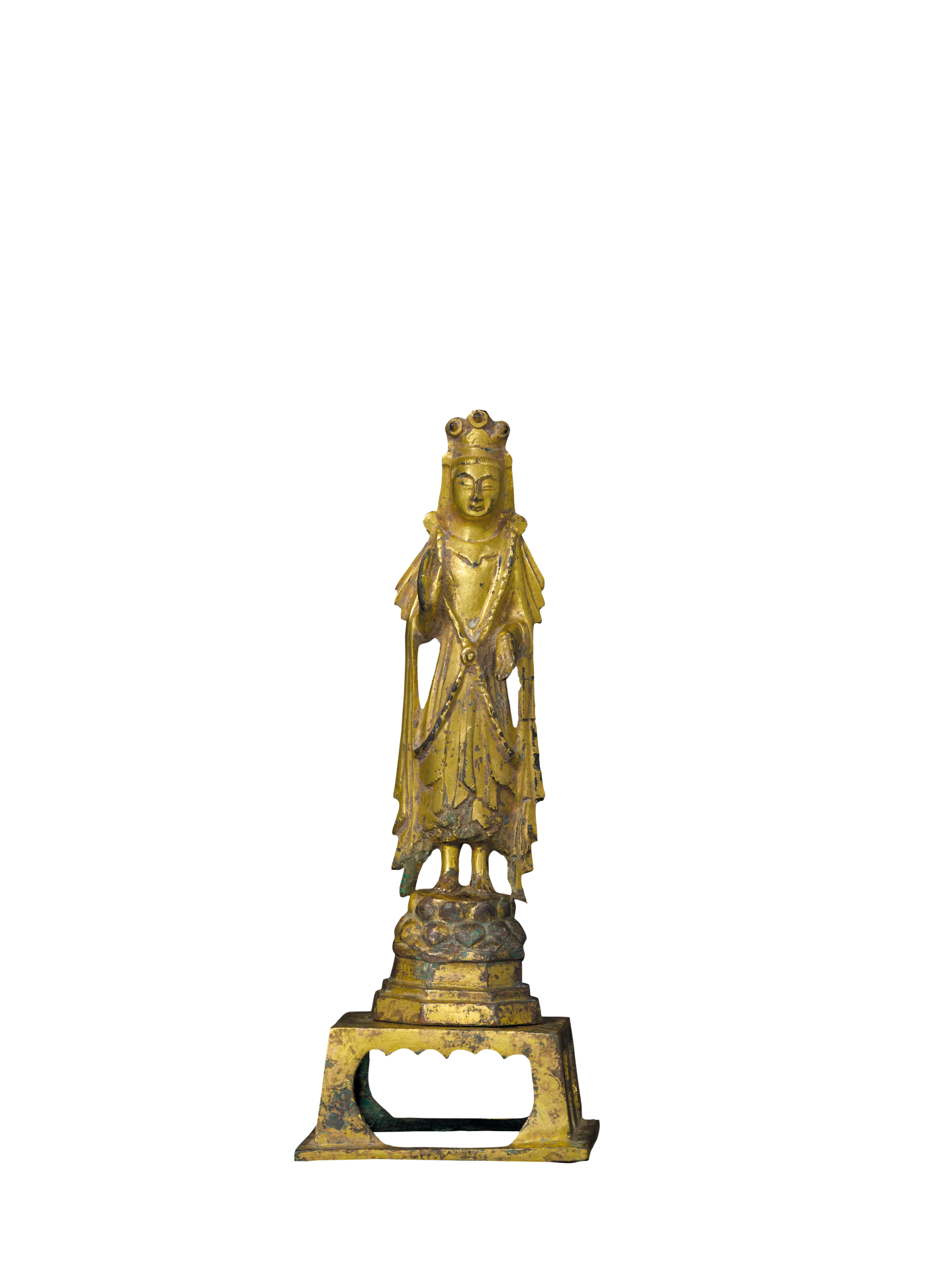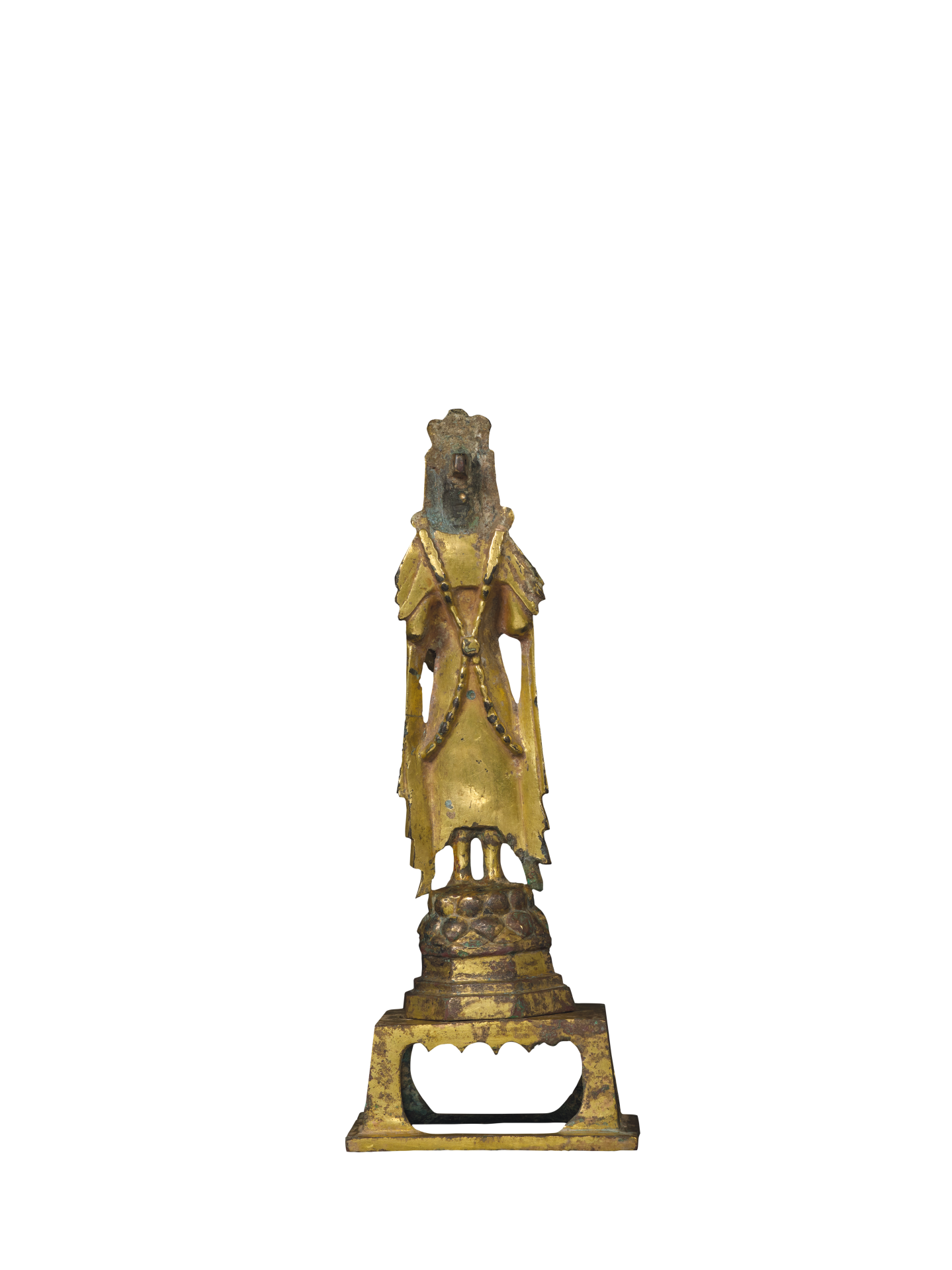Standing Bodhisattva
This Bodhisattva with the right hand in ‘fearless gesture’ (abhayamudrā) and left hand in ‘wish granting gesture’ (varadamudrā) is standing on a double-lotus pedestal, cast as a single piece with the statue. Below the pedestal is an octagonal base and then a square plinth with cusped opening on each side. The statue’s surface is entirely gilt and is well-preserved.
The Bodhisattva has an oval face, long narrow eyes with a straight slit, plump cheeks and gently pursed lips hinting a smile. The three-leaf regal crown surmounted by three spherical gems has ribbons hanging down the sides and cascading over the shoulders in sawtooth-like outward scrolls. The upper body is draped with a shawl and adorned with a torc around the neck and a criss-crossed long necklace anchored in front of the waist by a plaque. The shoulders are hidden under the shawl. The upper body is upright while the belly is flat and shows no undulation. Apart from the feet, the shape and structure of the lower body are concealed by the masses of elaborate folds of the long skirt which looks thick and weighty. The shawl’s ends and the skirt’s hem are close to the legs.
The clasp behind the Bodhisattva’s head suggests that a nimbus was once there. Although the statue’s reverse side has only few details and no depiction of drapery, the long necklace passing through the shoulder rings and forming a criss-cross behind the statue is clearly represented. All these characteristics conform to Northern Qi’s style statuary (550-577 CE). However, the plinth of this statue is similar to that of the Sui dynasty (581-619 CE), suggesting that the entire piece was produced in the late Northern Qi and early Sui dynasty.

